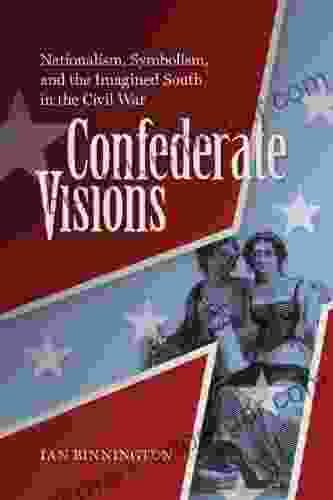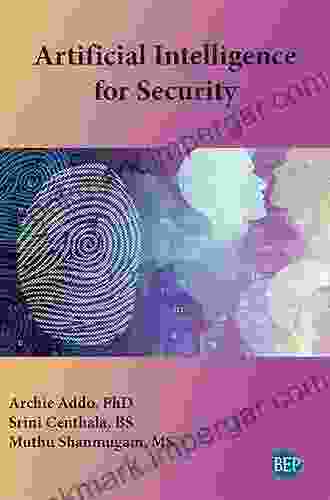Nationalism, Symbolism, and the Imagined South in the Civil War: A Nation Divided

The American Civil War, fought between the Union and the Confederacy from 1861 to 1865, was a watershed moment in American history. It was a conflict that pitted brother against brother, and it left a deep scar on the nation's psyche. In the years since the war, historians have sought to understand the causes of the conflict and its lasting impact.
In "Nationalism, Symbolism, and the Imagined South in the Civil War: A Nation Divided," historian John B. Busey argues that the war was fought over competing visions of American nationalism. The Unionists saw the United States as a single, indivisible nation, while the Confederates believed that it was a confederation of sovereign states. This fundamental difference in ideology led to the outbreak of war.
5 out of 5
| Language | : | English |
| File size | : | 1732 KB |
| Text-to-Speech | : | Enabled |
| Screen Reader | : | Supported |
| Enhanced typesetting | : | Enabled |
| Word Wise | : | Enabled |
| Print length | : | 207 pages |
Busey also explores the role of symbolism in the Civil War. He argues that both the Union and the Confederacy used symbols to rally their supporters and to demonize their enemies. The Union's use of the American flag, for example, helped to create a sense of national unity, while the Confederacy's use of the Confederate battle flag helped to create a sense of Southern identity.
Finally, Busey discusses the concept of the "imagined South." He argues that both the Unionists and the Confederates had their own ideas about what the South was like, and these ideas were often based on myth and stereotype. These imagined visions of the South helped to shape the course of the war.
The Causes of the Civil War
The American Civil War was caused by a complex set of factors, including slavery, economic differences, and political disagreements. However, Busey argues that the most fundamental cause of the war was the competing visions of American nationalism held by the Unionists and the Confederates.
The Unionists believed that the United States was a single, indivisible nation. They argued that the Constitution created a perpetual union of states and that no state had the right to secede from the Union. The Confederates, on the other hand, believed that the United States was a confederation of sovereign states. They argued that each state had the right to secede from the Union if it felt that its interests were not being met.
This fundamental difference in ideology led to the outbreak of war in 1861. The Unionists were determined to preserve the Union, while the Confederates were determined to protect their states' rights. The war was a bloody and costly conflict, but in the end, the Unionists prevailed.
The Role of Symbolism in the Civil War
Symbols played a vital role in the Civil War. Both the Union and the Confederacy used symbols to rally their supporters and to demonize their enemies.
The Union's most important symbol was the American flag. The flag represented the Union's ideals of unity, freedom, and democracy. The Unionists used the flag to inspire their troops and to rally support for the war effort.
The Confederacy's most important symbol was the Confederate battle flag. The battle flag represented the Confederacy's ideals of states' rights, self-determination, and white supremacy. The Confederates used the battle flag to inspire their troops and to rally support for the war effort.
Other symbols were also used by both sides during the Civil War. The Unionists used the eagle as a symbol of strength and power, while the Confederates used the rattlesnake as a symbol of independence and defiance. Both sides used music and literature to promote their cause and to demonize their enemies.
The Imagined South
Both the Unionists and the Confederates had their own ideas about what the South was like. These ideas were often based on myth and stereotype.
The Unionists saw the South as a backward and barbaric region. They believed that the South was dominated by slavery and that the Southern people were ignorant and uncivilized. The Confederates, on the other hand, saw the South as a land of chivalry and honor. They believed that the South was a superior civilization to the North and that the Southern people were more noble and refined.
These imagined visions of the South helped to shape the course of the war. The Unionists believed that they were fighting to bring civilization to the South, while the Confederates believed that they were fighting to protect their way of life from Northern aggression.
The Civil War was a complex and tragic conflict. It was a war that pitted brother against brother and that left a deep scar on the nation's psyche. "Nationalism, Symbolism, and the Imagined South in the Civil War: A Nation Divided" is a valuable resource for anyone who wants to understand this important period in American history.
"Nationalism, Symbolism, and the Imagined South in the Civil War: A Nation Divided" is a well-written and thought-provoking book. Busey provides a fresh perspective on the Civil War and offers valuable insights into the causes of the conflict and its lasting impact. This book is a must-read for anyone interested in American history.
5 out of 5
| Language | : | English |
| File size | : | 1732 KB |
| Text-to-Speech | : | Enabled |
| Screen Reader | : | Supported |
| Enhanced typesetting | : | Enabled |
| Word Wise | : | Enabled |
| Print length | : | 207 pages |
Do you want to contribute by writing guest posts on this blog?
Please contact us and send us a resume of previous articles that you have written.
 Book
Book Novel
Novel Page
Page Chapter
Chapter Text
Text Story
Story Genre
Genre Reader
Reader Library
Library Paperback
Paperback E-book
E-book Magazine
Magazine Newspaper
Newspaper Paragraph
Paragraph Sentence
Sentence Bookmark
Bookmark Shelf
Shelf Glossary
Glossary Bibliography
Bibliography Foreword
Foreword Preface
Preface Synopsis
Synopsis Annotation
Annotation Footnote
Footnote Manuscript
Manuscript Scroll
Scroll Codex
Codex Tome
Tome Bestseller
Bestseller Classics
Classics Library card
Library card Narrative
Narrative Biography
Biography Autobiography
Autobiography Memoir
Memoir Reference
Reference Encyclopedia
Encyclopedia J Paul Guyer
J Paul Guyer Susan Greenwood
Susan Greenwood Ingrid Morgan
Ingrid Morgan Sidney Rosen
Sidney Rosen Imogen Racz
Imogen Racz Suleiman Ali Mourad
Suleiman Ali Mourad Richard E Ford
Richard E Ford Ian Sinclair
Ian Sinclair J P Den Hartog
J P Den Hartog Don Barlow
Don Barlow Jordan Raynor
Jordan Raynor Howard Markel
Howard Markel Katharine Davis
Katharine Davis Martin S Fridson
Martin S Fridson Isaac Weishaupt
Isaac Weishaupt Izaskun Chinchilla
Izaskun Chinchilla Jack Brewer
Jack Brewer J Ramsey
J Ramsey Jacques Roumain
Jacques Roumain J Stannard Baker
J Stannard Baker
Light bulbAdvertise smarter! Our strategic ad space ensures maximum exposure. Reserve your spot today!
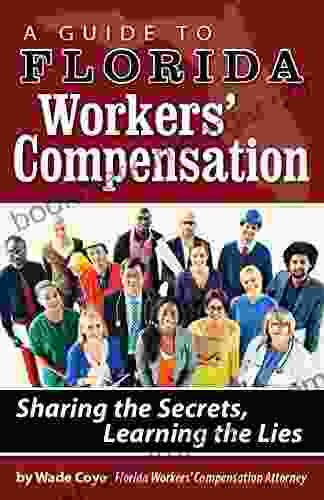
 Chadwick PowellThe Ultimate Guide to Florida Workers' Compensation: Your Essential Resource
Chadwick PowellThe Ultimate Guide to Florida Workers' Compensation: Your Essential Resource Edmund HayesFollow ·18.4k
Edmund HayesFollow ·18.4k Octavio PazFollow ·15.8k
Octavio PazFollow ·15.8k Terry PratchettFollow ·8.9k
Terry PratchettFollow ·8.9k Demetrius CarterFollow ·15.7k
Demetrius CarterFollow ·15.7k Fernando BellFollow ·12.4k
Fernando BellFollow ·12.4k Carlos FuentesFollow ·18.2k
Carlos FuentesFollow ·18.2k Greg FosterFollow ·6.8k
Greg FosterFollow ·6.8k Evan SimmonsFollow ·4.7k
Evan SimmonsFollow ·4.7k

 Mike Hayes
Mike HayesUnlock Your Nonprofit Potential: A Comprehensive Guide to...
: Embarking on the Path to Impactful...
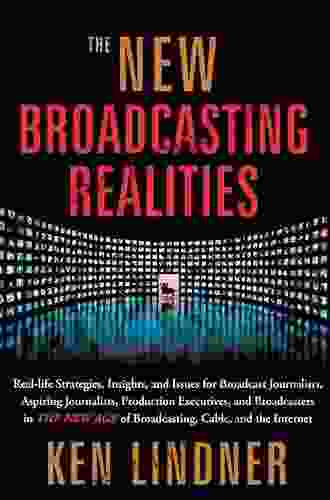
 Cody Russell
Cody RussellUnlock the Secrets of Captivating Radio Programming:...
In the fiercely competitive world of...

 Aron Cox
Aron CoxUnveiling the Enchanting World of Beth Inspired Eye...
A Realm of Imagination and Wonder Embark on...
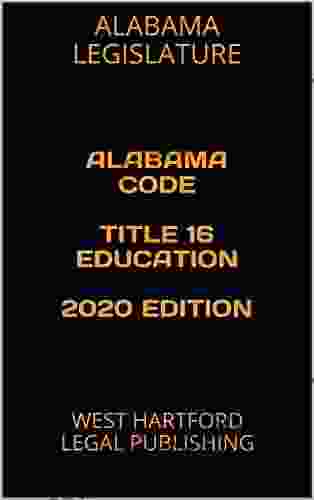
 Felix Carter
Felix CarterUnlock the Secrets of Legal Publishing with West Hartford...
West Hartford Legal Publishing, the renowned...

 Henry Hayes
Henry HayesUnveiling the Secrets of the Panama Papers: Exposing...
The Panama Papers is a groundbreaking...
5 out of 5
| Language | : | English |
| File size | : | 1732 KB |
| Text-to-Speech | : | Enabled |
| Screen Reader | : | Supported |
| Enhanced typesetting | : | Enabled |
| Word Wise | : | Enabled |
| Print length | : | 207 pages |


